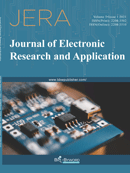Abstract
Innovative approaches in ultrasonic assistant soldering consist consists of increasing the activity of cavitation and accelerating diffusion processes at the interface between the solder and the soldering material. Besides that, it improves the effectiveness of cavitation processes in melts by saturating gas cavities with diamete rs that are smaller than the resonant sizes of cavitation germs. Gas saturation of liquids and melts raises level of cavitation pressure by 20 25%25%, that intensifies US processing of cleaning, soldering and metallization. Modelling diffusion process showed that the US activation increased the concentration of diffusing elements of Zn and Al in the interface depth by 15 20% on average, and the combined activation by the US and electric field increased it by 30 45%. Furthermore, as the energy quantity adsorbed by melt increases, increased amplitude and frequency of US vibrations induces concentration rise. The heat energy was also boosted by combining the activation of the melt–soldered material system with US vibrations energy and high current pulses. This allows for a faster increase in soldering temperature, as well as improved solder wettability.
References
Leighton TG, 1994, The Acoustic Bubble. Academic Press, London.
Kolenak R, 2008, Solderability of Metal and Ceramic Materials by Active Solders. Forschungszentrum, Dresden.
Abramov OV, 1998, High–Intensity Ultrasonics. Theory and Industrial Applications. OPA, Amsterdam.
Naka M, Hafez KM, 2003, Applying of Ultrasonic Waves on Brazing of Alumina to Copper Using Zn-Al Filler Alloy, Journal of Materials Science. 38(16), 3491-3494. DOI:10.1023/A:1025161120349
Lanin VL, 2015, Application of the Concentrated Power Streams in Electronics Industry. Scholar’s Press, Saarbrucken.
Ensminger D, Bond LJ, 2012, Ultrasonics: Fundamentals, Technologies, and Applications. CRC Press, Boca Raton.
Subramanian KN, 2007, Lead-Free Electronic Solders. Springer-Science, New York.
Chinnam RK, Fauteux C, Neuenschwander J, Janczak-Rusch J, 2011, Evolution of Microstructure of Sn-Ag-Cu Solder Joints Exposed to Ultrasonic Waves During Solidification, Acta Materialia, 4, 1474–1481. DOI.org/10.1016/j.actamat.
Nagaoka T, Morisada Y, Fukusumi M, Takemoto T, 2009, Strength and Corrosion Resistance of a Solder Joint in Ultrasonic Soldering of Aluminium Using Quasi-Melting Solder. Welding International, 12, 879–885. DOI.org/10.1080/09507110902836960.
Kolenak R, Kostolny I, Drapala J, et al., 2020, Direct Ultrasonic Soldering of AlN Ceramics with Copper Substrate Using Zn–Al–Mg Solder. Metals. 10(2), 1–18. https://doi.org/10.3390 /met10020160.
Dušek K, Pla?ek M, ?epek M, et al., 2017, Ultrasonic Soldering, Mechanical Properties of Solder Joints. Proc. of 40th International Spring Seminar on Electronics Technology (ISSE). 10–14 May 2017. Sofia, Bulgaria, 1–4.
2008, Technical Data Sheet BALVER ZINN Solder. https://www.yumpu.com › document › view › tech.
Belyakov SA, 2008, Ultrasonic Modification of Sn-Ag-Cu Alloy Microstructure. Proc. of 9th Inter. Workshop and Tutorials, EDM’2008. Erlagol, 58–59.
Faridi H, Devletian J, Le H, 2000, A New Look at Flux-Free Ultrasonic Soldering. Welding Journal. 9, 41–45.
Pericleous K, Bojarevics V, Djambazov G, et al., 2019, Contactless Ultrasonic Cavitation in Alloy Melts, Materials. 12, 1–13. https://doi.org/10.3390/ma12213610
Agranat BA, Gudovich AP, Nezhenko LB, 1986, Ultrasound in Powder Metallurgy. Metallurgy, Moscow.
Shilyaev AS, 1992, Ultrasonic Treatment of Melts in the Production and Restoration of Machine Parts. Science and Technique, Minsk.
Lanin VL, 2008, Activation of Soldered Connections in the Process of Formation Using the Energy of Ultrasonic and Electric Fields, Surface Engineering and Applied Electrochemistry. 3, 234–239. https://doi: 10.3103/S1068375508030113.
Lanin VL, 2013, Increase Activity Cavitations in Liquids and Melts at Ultrasonics Processing, Open Journal of Acoustics. 3A, 13–15. https:// doi:10.4236/oja.2013.33A003
Ilyichev VI, Koretz VL, Melnicov NP, 1989, Spectral Characteristics of Acoustic Cavitation., Ultrasonics. 27, 357–361.
Lanin VL, 2003, Cavitation Intensity Investigation at Ultrasonic Soldering. Proc. of Ultrasonics Int. Conf., 1–3 July 2003, Granada (Spain), 154–156.
Lanin VL, 2010, Ultrasonic Soldering in Electronics: New Opportunities, Solid State Electrochemistry by T. G. Willard. 2010. Nova Science Publishers, New York: 201-211.
